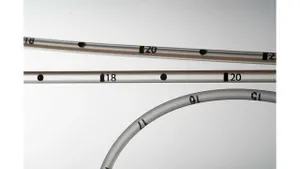Evonik to apply new MMA production technique at expanded Alabama plant
A new process developed by Evonik over the last five years for the manufacture of methyl methacrylate (MMA) will be applied at commercial scale production rates in a newly announced 120,000 tonnes/yr site in Alabama. Evonik is starting basic planning of the facility which will come onstream in mid-2015, with the site to apply its Aveneer process and employ 100.
September 27, 2012
over the last five years for the manufacture of methyl methacrylate (MMA) will be applied at commercial scale production rates in a newly announced 120,000 tonnes/yr site in Alabama. Evonik is starting basic planning of the facility which will come onstream in mid-2015, with the site to apply its Aveneer process and employ 100. The monetary investment was described as being in the "three-digit million Euro range." MMA's primary use is as a building block for the resin polymethyl methacrylate (PMMA).
Evonik's Mobile, AL operation is its largest North American site, and it will be the first MMA plant globally to use the new Aveneer process. Evonik says the Aveneer process has an improved carbon footprint, with process CO2 emissions that are lower than 1000 kg CO2/tonne of MMA. That level equates to a little over half of the current value, according to Evonik.
As with the traditional ACH sulfo process, Aveneer still uses ammonia, methane, acetone, and methanol, but it does not need sulfuric acid and provides an overall yield of 95%, which Evonik says is "significantly more efficiently than the current process." It also allow simultaneous production of methyl methacrylate and methacrylic acid in a single plant.
Evonik also maintains MMA production in Germany (Worms and Wesseling); Fortier, LA; and Shanghai. Evonik markets more than 50 monomers, in addition to MMA, which are produced from or related to MMA under the Visiomer brand name. MMA's principal production method is acetone cyanohydrin (ACH), which uses acetone and hydrogen cyanide as raw materials. The intermediate cyanohydrin is converted into a sulfate ester with sulfuric acid.
About the Author(s)
You May Also Like


